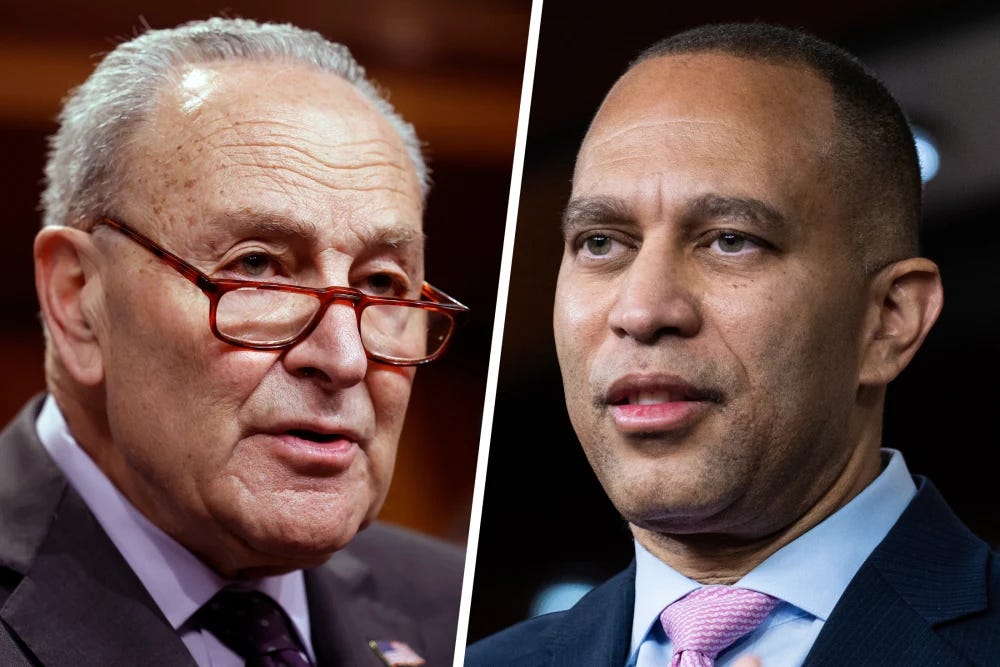Democrats Push Back Against Trump’s Federal Funding Freeze, Claiming a Small Victory
A Democratic strategist noted Tuesday was "the first day in months" they felt confident in their messaging.
WASHINGTON — In his first week back in office, President Donald Trump has taken sweeping executive actions that have left Democrats struggling to craft a unified response. However, his broad attempt to freeze federal aid funding sparked a fierce backlash that ultimately forced the White House to retreat.
The administration’s directive to pause federal funding across various sectors created widespread confusion, with reports surfacing that Medicaid reimbursement systems were crashing, and early childhood development, healthcare, and housing funds were in jeopardy. Facing mounting pressure and internal disarray, the White House rescinded the order two days later, giving Democrats a much-needed political win.
“Yesterday was the first day I actually felt good about Democratic messaging in, like, six months,” a Democratic strategist told NBC News. “It was an economic message, and we were so unified.”
A Turning Point for Democratic Strategy
At a Senate Democratic lunch meeting Wednesday, Minority Leader Chuck Schumer, D-N.Y., rallied his colleagues, urging them to capitalize on the momentum. “It’s a small victory, but this is just the beginning. Trump’s ‘Project 2025’ agenda is coming, and we have to stay ready,” Schumer said, referring to the administration’s conservative blueprint for overhauling the federal government.
The freeze also led to a more confrontational stance from Democrats in Congress. Following Trump’s pick for Transportation Secretary, Sean Duffy, advancing in committee, 22 Senate Democrats flipped their votes to oppose his final confirmation—a direct protest against the White House’s budget order.
“This was a wake-up call,” said Sen. Chris Murphy, D-Conn. “Some people were hesitant to sound the alarm, but now they see that the wolf has been in our living room all along.”
Coordinated Efforts to Push Back
House Minority Leader Hakeem Jeffries, D-N.Y., quickly organized an emergency virtual meeting with his caucus to strategize their opposition. His approach focused on three pillars: legislative action, legal challenges, and ramping up public messaging.
Shortly before the meeting, the administration officially rescinded the funding freeze, which Democrats saw as proof that their opposition was working. Jeffries emphasized the importance of maintaining pressure, telling lawmakers that this was only the first of many battles.
“The Trump administration and Republican majority are cutting programs and services to fund tax breaks for billionaires,” said Rep. Veronica Escobar, D-Texas, a member of the House Appropriations Committee. “Even though today’s order was withdrawn, this fight is far from over.”
Grassroots Action and Future Battles
Democrats are taking the fight beyond Congress. The Democratic Policy and Communications Committee, led by Rep. Debbie Dingell, D-Mich., encouraged lawmakers to engage in a nationwide “Day of Action” to highlight the potential impacts of Trump’s policy agenda. A memo circulated among House Democrats emphasized that the issue “is not theoretical” and called for press conferences, constituent meetings, and media outreach to keep the spotlight on the administration’s efforts to cut funding.
While the broader funding freeze has been rolled back, Trump’s executive orders limiting foreign aid, diversity and equity programs, and certain funds tied to the Inflation Reduction Act remain in effect. Democrats say they will continue challenging these measures.
“This is a rapidly evolving situation,” Escobar said. “We reassured our communities that we would keep fighting for them, and within moments of speaking to the press, we learned that a court had issued a temporary stay. The stakes are high, and we are going to keep pushing back.”
As Trump’s administration moves forward with its conservative policy agenda, Democrats appear to have found a rallying point—one they hope will help unify their party and energize voters heading into the next election cycle.


